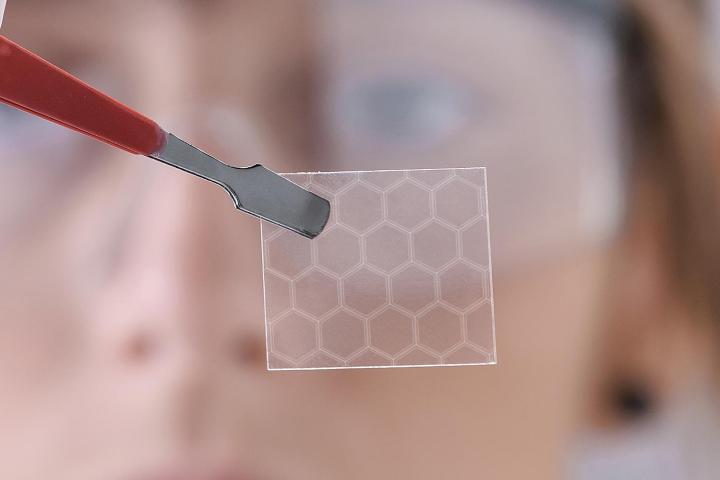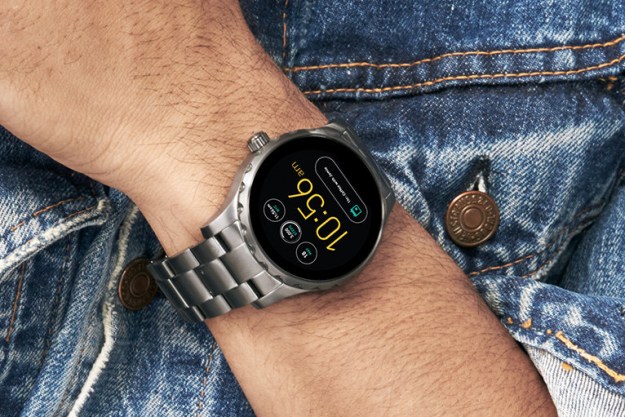
It seems the only limit to the future of wearable technology is the human imagination — well, that and the technology itself. Because a gadget is only as good as the technology that fuels it.
The good news, however, is that a number of exciting new breakthroughs just over the horizon may well transform the way we think about the space — and really help wearable technology vault to the forefront of our lives. As we look forward toward the dawn of a new year, let’s take a glimpse at the technologies that may well power the next generation of wearables.
Flexible displays
Even as they’ve continued to grow progressively larger, displays have always been something of a constraint on smartphones. They are, after all, the single largest contiguous piece of hardware, and as such they play an enormous role in defining the user experience. Displays are a large part of why so much of the smartphone war has played out on the software battle field.
The human body, as it turns out, is a pretty tricky canvas to work with.
This goes double for wearables, where screen size and inflexibility has served quite literally as a restraint to form factor. There’s a reason, after all, that smartwatch and fitness band displays are so damned small. The human body, as it turns out, is a pretty tricky canvas to work with. It’s curvy and angular and straight and bumpy, all at the same time. It’s one thing when you’re putting cloth on it, and another thing entirely when you’re attempting to cover it with circuitry.
Smartphone manufacturers have forever described flexible displays as the technology that will some day revolutionize the space, and that goes double for the nascent world of wearables. The difficulty of working with the body as a platform is amplified by orders of magnitude when you factor in the variation from person to person. At the moment, the vast majority of wearables are very far from being one size fits all.
Flexible batteries
Batteries certainly go hand-in-hand with flexible displays as the second largest obstacle between us and more comfortable, easily customizable wearable devices. Thankfully, companies like Samsung are working on something as we speak.
Solar, kinetic, and alternative device charging
It’s not just the size and shape of batteries, but their short lifespans. Every time you add another feature into the mix, battery life almost invariable suffers the consequences. When we’re talking about, say, a smartwatch that tracks both movement during the day and sleep patterns at night, when precisely are you supposed to take the thing off to charge it?

Is it possible that manufacturers are missing a golden opportunity here to offer up a device that never (or rarely) needs to be taken off and charged? Solar seems like prime candidate. After all, unlike smartphones, these devices are meant to live outside the dark confines of pants pockets and flexible solar chargers are already out there.
Then there’s the possibility of harnessing kinetic energy — in other words: a you-powered device that takes its energy from your own movements. Heat-based charging could be huge, certainly. After all, those devices should get something out of having to be pressed up against your warm skin all day long.
Fabric sensors
How about this one: Wearable technology built directly into clothing. After all, even the seemingly most lightweight wearable can be a nuisance. Every day I sit down at my computer and attempt to type without taking off my fitness band. And every day, invariably, I end up removing it. Every day. The good news is I only actually forget it at home about half the time these days. I’m getting better at that.
At the moment, the vast majority of wearables are very far from being one size fits all.
Point being, scientists are currently working on developing motioning-tracking fiber-optic thread. Assuming, as we’ve previously discussed, the smartphone will remain our central information hub for the the near future, building sensors directly into our garments would greatly reduce the need to wear a million separate devices on our person at any one time. It’s also easy to imagine more forward-thinking clothing makers jumping at the opportunity to sew such tracking into their wares.
At the very least, it should take long for Nike to begin offering up gym shorts with motion sensing built in.
Graphene
You remember graphene, right? It’s the wonder material that’s we hear about every few months or so, with regards to how it’s going to change the way we think about everything forever and ever. The single atom-thin material has the potential to be embedded directly in garments like the above technology, while actually conducting charges through the clothing itself.

So, why isn’t this amazing stuff in everything we own yet? Cost is a big part of it. What’s the point of a wearable that costs you an arm and a leg, right? Thankfully, the price is likely to drop soon — heck, last year Bill Gates even began funding research into graphene-based condoms that would offer full protection while being considerably thinner than what’s currently on the market. No joke. And really, isn’t that the ultimate wearable technology?
3D printing
This one’s kind of a given, right? After all, we’ve already see custom-printed prosthesis. Why aren’t we seeing more 3D printed customization in wearables? Have you ever seen those super high-end injection-molded earbuds? Just think of what can be done for the wearable industry with access to a 3D scanner and printer.
What do you want?
All right, so here’s what I want from you, dear reader — with the demand for wearables front and center, and so much cool technology just over the horizon, what would you like to see the next generation of wearables do for you? Drop me a line at bheater@digitaltrends.com.
We’ll round up the best suggestions in next week’s column.
Editors' Recommendations
- Here’s what a trend-analyzing A.I. thinks will be the next big thing in tech
- Ford’s 3D knitting tech ensures your seats won’t burst at the seams
- Edelkrone’s 3D-printed wearable monopod fits in your pocket and your budget
- MIT’s tiny walking robot could eventually build other, bigger robots


